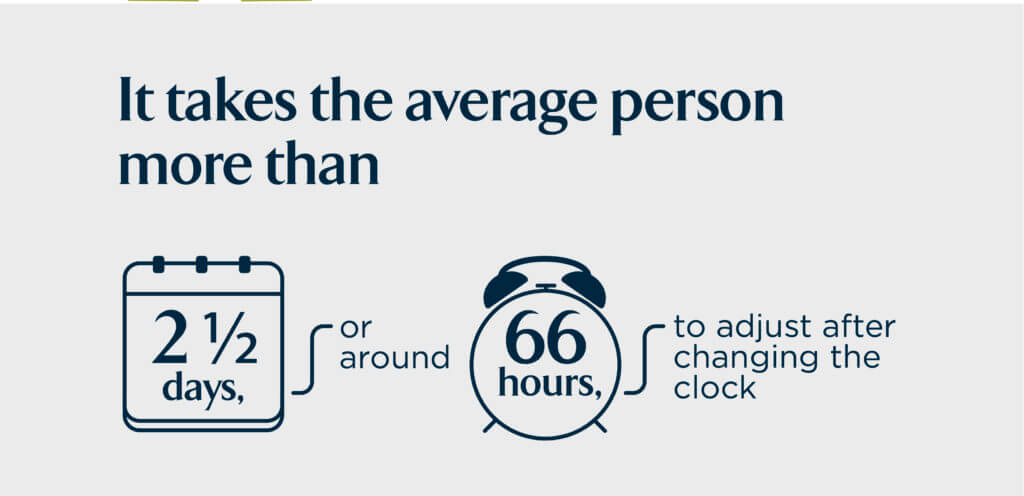NEW YORK — It might serve as a convenient scapegoat for disrupted sleep and missed appointments, but three in five Americans don’t actually mind daylight saving time all that much. Changing the clocks twice a year, though? That’s another story entirely. According to a recent survey of 2,000 respondents, three in five feel positively about daylight saving time as a general concept – but also still think the practice of moving clocks an hour forward and back should be abolished.
Reported by OnePoll on behalf of Pacific Coast, the survey also revealed that over half of those polled (55%) own at least one analog clock they still need to fix manually. Four in 10 would prefer a permanent form of daylight saving, where the sun rises and sets later in the day on a year-round basis.
As it stands, the typical respondent needs 66 hours, or over two-and-a-half days, to adjust to a new routine after the clocks change.
Compared to men, women like it less (56% vs. 43%) and actively dislike it more (16% vs. 6%) – perhaps because it takes them an extra three hours to adjust.

Older adults can’t stand changing the clocks
Age may also play a role, too, as baby boomers (ages 56-78) are almost twice more likely than Gen Xers (ages 42-55) and 11 times more likely than millennials (ages 26-41) to hold a negative view of daylight saving time. Of the three generations, boomers also seem to get the most sleep overall – almost half an hour more than gen Xers and a full hour more than millennials.
Just over a third get the recommended seven to nine hours of sleep a night, and another third only get between four and five hours. Only 60 percent keep a fairly consistent sleep schedule of going to bed and waking up around the same time each day.
“It’s important to be gentle and understanding with yourself when daylight saving rolls around – after all, gaining and losing that hour of time can throw off your circadian rhythm,” a spokesperson from Pacific Coast advises. “Consider going to sleep a little earlier than you would otherwise, or allow yourself more time to unwind and relax before bed.”
A cool pillow is a big part of good sleep
Not surprisingly, if given a choice between being given the “perfect sleeping arrangements” and the power to make daylight savings permanent, nearly half (45%) would choose the former.
So, what would that “perfect” sleep entail? Forty percent say it would have to be climate controlled, referencing the temperature of the room (40%) and their mattress (37%) or bedding quality (27%).
MORE: Best Mattresses Of 2022: Top 4 Beds Most Recommended By Leading Experts
Regardless, the average respondent replaces their pillow every one to two years, which aligns with common recommendations from experts.
Of those polled, three in five tend to prefer a “soft” or “medium” pillow, while only one in five favor a “firm” level of comfort.
“To create your perfect bedding oasis, determine your sleep preferences, like your sleep position, preferred pillow firmness, the level of support needed for your neck and spine, and if you suffer from allergies,” the Pacific Coast spokesperson adds. “These factors, along with the quality of your bedding will help you to achieve the most restful and restorative sleep.”
Survey methodology:
This random double-opt-in survey of 2,000 general population Americans was commissioned by Pacific Coast between October 14 and October 15, 2022. It was conducted by market research company OnePoll, whose team members are members of the Market Research Society and have corporate membership to the American Association for Public Opinion Research (AAPOR) and the European Society for Opinion and Marketing Research (ESOMAR).
